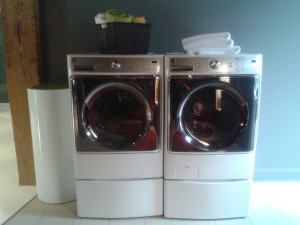 Over the weekend, the New York Times ran a story about real estate prices that discussed how both home prices and land prices are going up again. The story is very much about how developers are looking for land. But it misses one key point: the house itself goes down in price, not up.
Over the weekend, the New York Times ran a story about real estate prices that discussed how both home prices and land prices are going up again. The story is very much about how developers are looking for land. But it misses one key point: the house itself goes down in price, not up.
If you divide the purchase of a house into its components, you get a combination of land, building and contents, prepaid rent, prepaid public school tuition, and access to the local community. Of these, the building and contents are always depreciating assets; I don’t care how good your taste is or what the brands are, once that washer and dryer show up in your house, they start depreciating. A house required ongoing maintenance. Eventually, just about everything will have to be replaced or redone. My house was built in 1896, but at this point, the foundation may be the only thing that’s original.
The value of the prepaid rent, prepaid public school tuition, and access to the local community will change over time. With a house, you have a place to live, and it may end up being a better place or a worse place over time. The determinants of that are in the next two components, the tuition value of the local public school and the community that surrounds your house. Are the school and community places where people want to be? These can change over time.
The land itself is a store of value, which means that it can be expected to increase at the rate of inflation over the long run, no more and no less.
When you break it out this way, you see that the real way to increase housing value is to creating a community where people want to live. A good public school will add more value to a house than a front-loading washer off the master suite.


